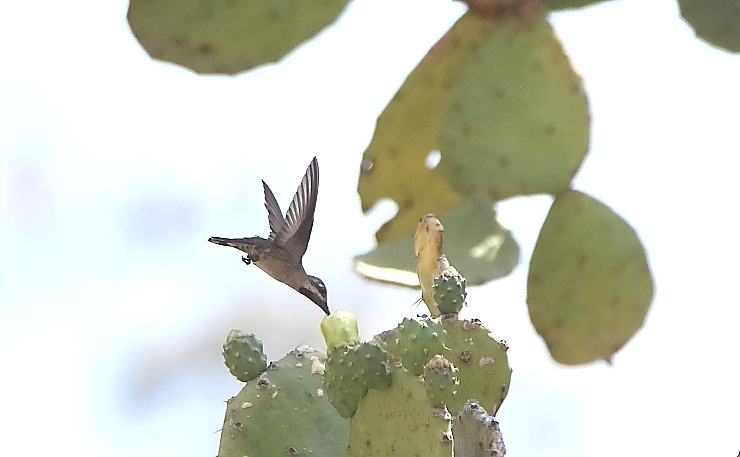
Down here at the southern end of so many birds’ annual migrations, spring can be a melancholy time. Between March and May, we say goodbye to more than half our duck and wood warbler species, as well as about half of all our shorebirds, vireos, hummingbirds, buntings, sparrows, and orioles, and many members of other avian families. Several Empidonax flycatcher species also leave for the north… But I can’t get too sad about that.
And there is some sweetness in these bittersweet months. For a few, only a few, species actually winter in Central and South America, and summer up here in Mexico. They are our summer consolation prizes. May-September is when I can hope to see the Sulphur-bellied Flycatcher, Yellow-green Vireo, Masked Tityra, and Cliff Swallow.
A friend in another region recently reported his first Sulphur-bellied Flycatcher of the season, so I decided to head over to the area around La Escalera, where I sometimes see this beautiful Tyrant Flycatcher. I did not, in fact, see any, so I’ll have to show some older photos of this species for context:
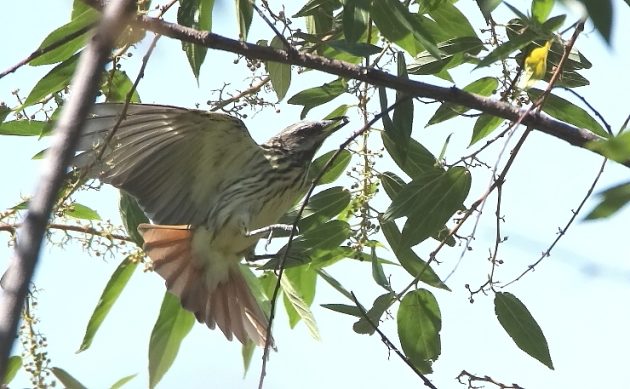
But the other summer-only species that is specific to this site did, in fact, turn up. These Masked Tityras only flew quickly overhead, so the photos shown below is also from a previous outing. But there was no doubt as to the calls I heard as the passed. The Merlin app describes it as “a wet quacking or farting sound”. (I’ll bet you didn’t expect to read that word in a bird guide.) Mexicans, always careful to avoid offense, more politely name this bird “puerquito“, suggesting that its call sounds like a pig’s oink. Either way, the call is unmistakeable.
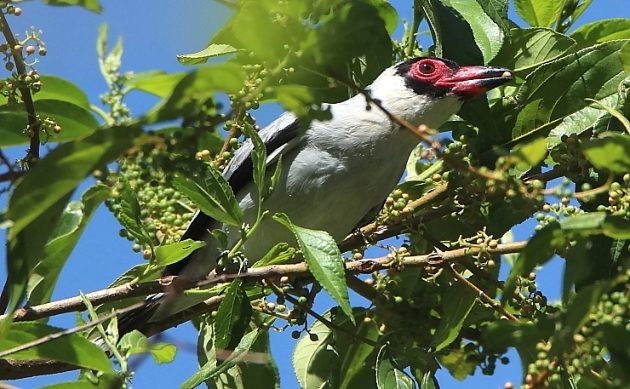
This little piggy…
There are a few other species I always hope/expect to see near the town of La Escalera. The road to El Palmar is my best place to see Lesser Roadrunners (slightly smaller than the species that can be seen the American Southwest). And guess what?
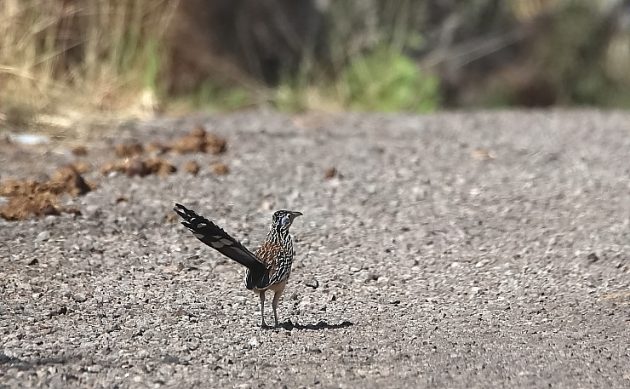
I did indeed see Lesser Roadrunners. They were running on roads.
My other route of choice, the unpaved road to the town of Arúmbaro, is where I hope to see the Sparkling-tailed Woodstar. But this time that lovely hummingbird failed to appear. Instead, I saw two other very special hummers. In fact, I saw them on the very same perches where I had hoped to see the Woodstar. The male Golden-crowned Emerald sports a long, deeply cleft tail, and this male was no exception. Unfortunately, it spent most of its time feeding in the middle of a flowering tree, and once it finally visited my side of the same, it stayed quietly perched, with its tail discreetly folded. Its colors showed nicely, though. (Just don’t ask me to defend the “golden-crowned moniker. Even eBird says its “crown is not really golden, more of a golden-green”. It looks plain green to me.)
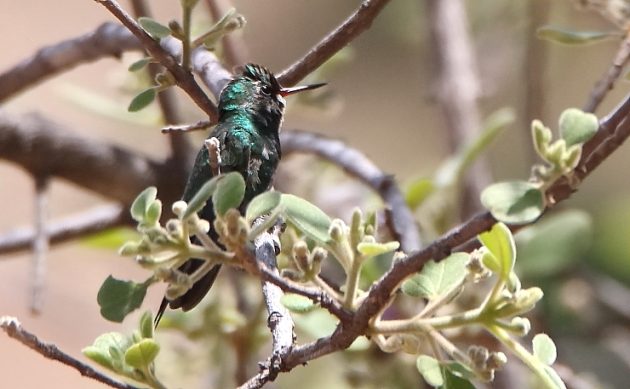
And, just above the Golden-crowned Emerald, a Plain-capped Starthroat (don’t you love hummingbird names?!) also sat calmly. I don’t know what was stranger, to see two hummer species perching so close to each other, or to see them doing so calmly. Hummers are normally very, very hyper birds. It must be all that sugar they consume.
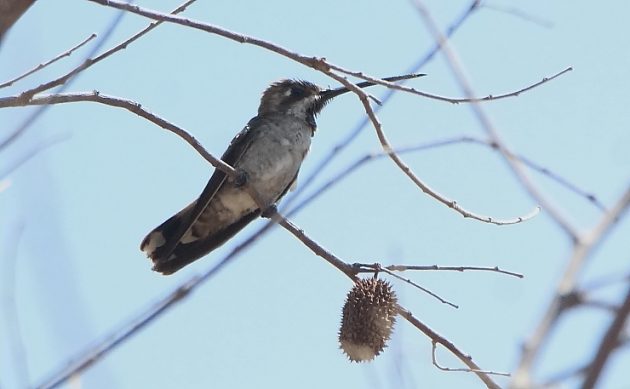
The Plain-capped Starthroat has the longest bill of any of my local hummers — up to twice the length of the head that supports it.
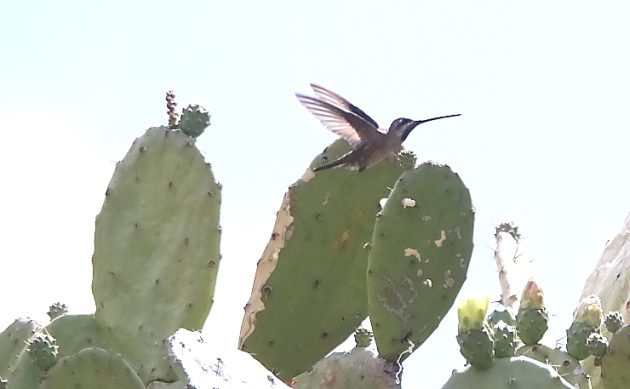
There were, of course, many other pretties to be seen. It took quite a bit of glue to get this Orange-billed Nightingale-Thrush to pose so artfully.
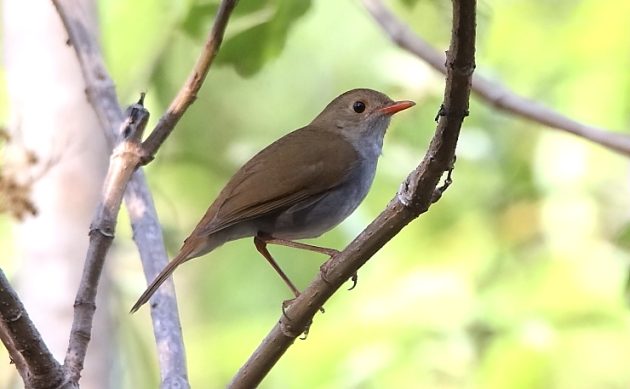
Just kidding!
Several Flame-colored Tanagers were also around. These aren’t the best photos, but it is rare for me to see more than one, much less a male and a female together. So I’ll show them anyway.
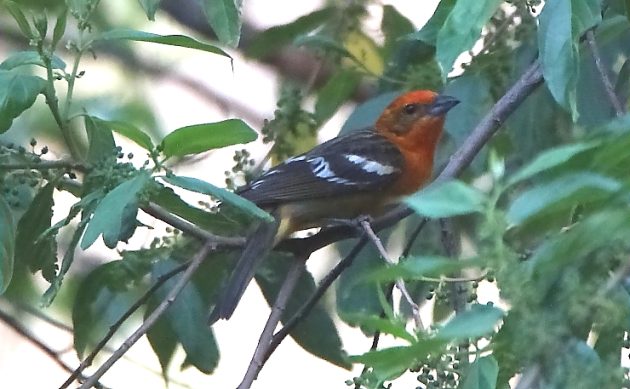
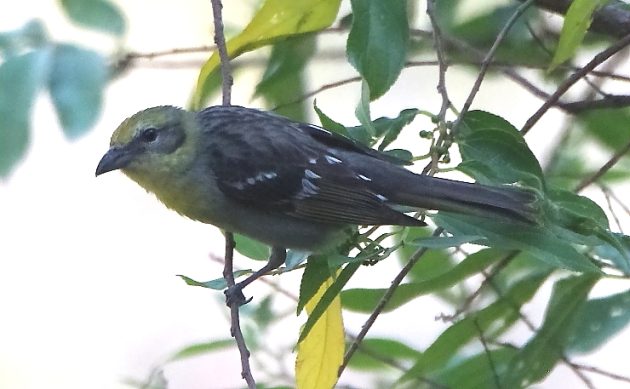
Care to guess which is which?
Northern Rough-winged Swallows are rather drab creatures. But it was a highlight of my day to discover how they nest.
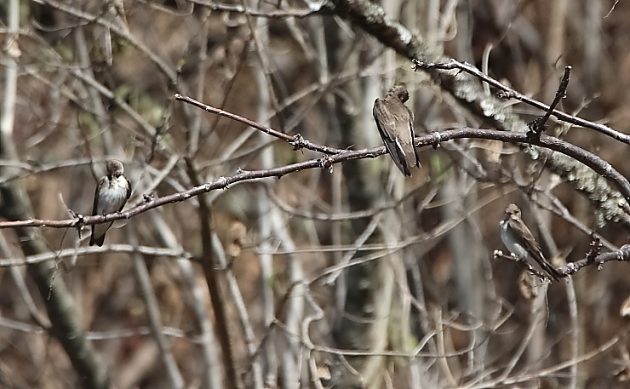
Here they are, just chilling.
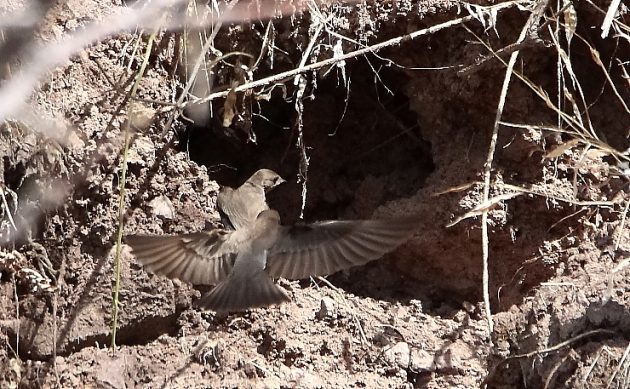
And then they head off to their nests! Which turn out to be dug into muddy cliffs. There were several.
The Nutting’s Flycatcher is also rather drab, much more muted than the above Sulphur-bellied Flycatcher. But this one certainly was kind to pose so nicely.
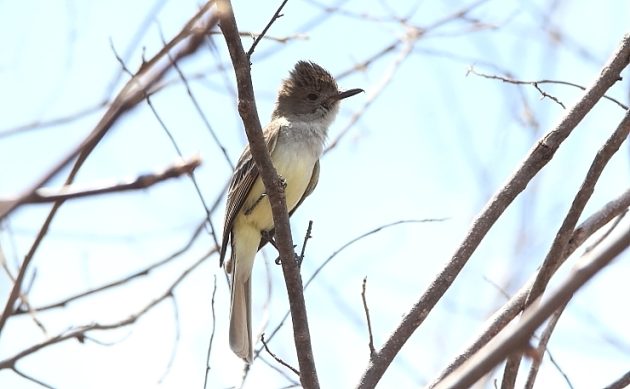
The truth is, that Sulphur-bellied Flycatcher wasn’t my only reason to head to La Escalera. Last year I found no acorns anywhere for my afforestation project, except on a row of oaks along the road to Arúmbaro. And those acorns produced four oak seedlings, now well-established after their first full year. And even though this year looks to be a “mast” year, when oaks all over Michoacán will produce bumper crops of acorns, I wanted to see if there would be more acorns in Arúmbaro come June or July. And…
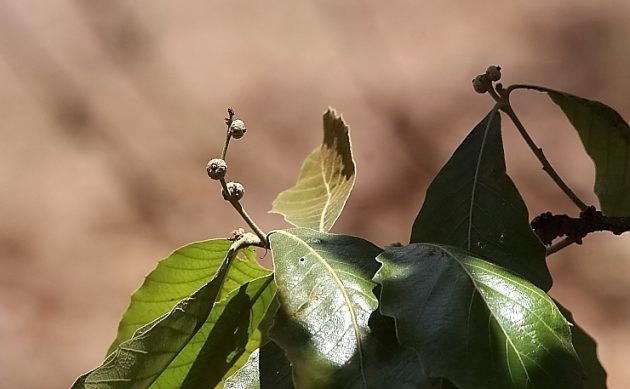
There will be!


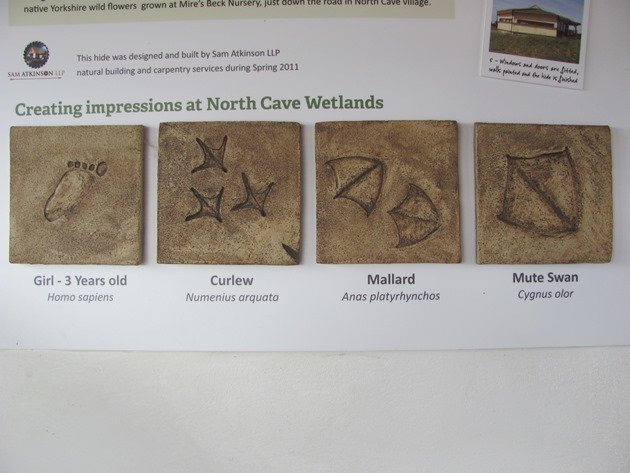

 New writers welcome – please contact us for details.
New writers welcome – please contact us for details.

















Leave a Comment